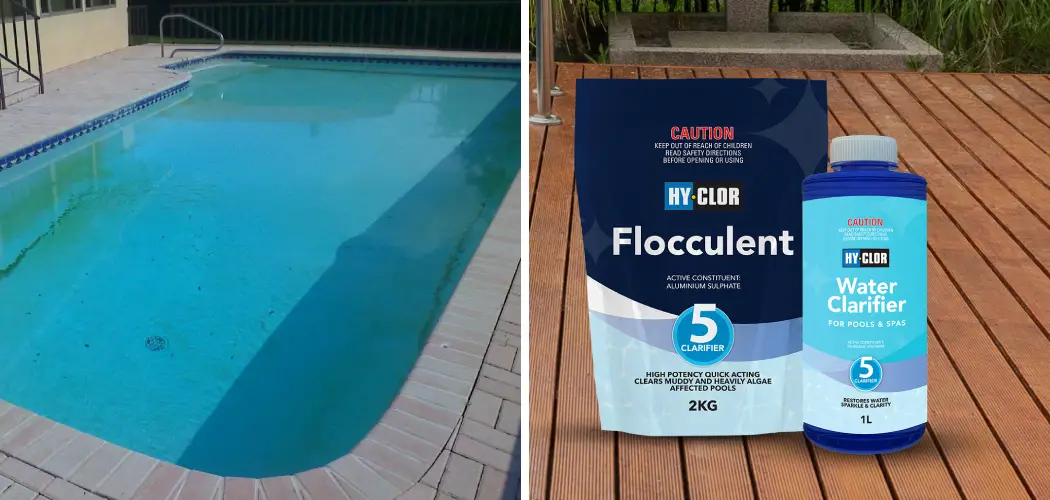Swimming is one of life’s greatest pleasures, and having a pool in your backyard can make that effortless. But to ensure you and your family have safe and enjoyable experiences in the water, it’s essential to properly maintain your pool chemistry. Easier said than done!
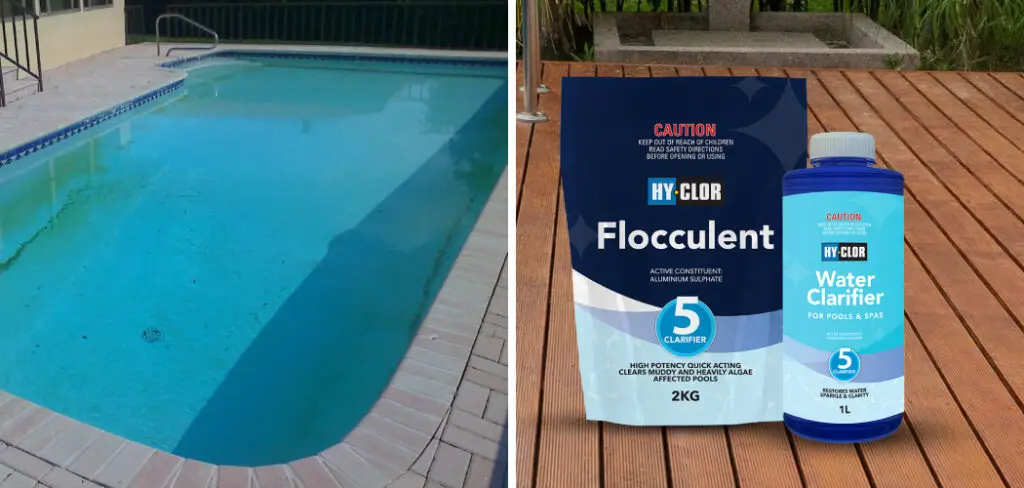
One of the best tools available for managing organic dirt in swimming pools is flocculant—a liquid or powder chemical compound used to help sediment settle at the bottom of the pool, leaving crystal-clear water above.
Knowing how to use this industrial-grade agent effectively could be the difference between an ordinary swim experience and a great one — so why not take advantage of it?
In this blog post on how to use flocculant in pool, we will explain all about using flocculants so that you can keep your swimming area shining year-round.
What is Flocculant?
Flocculant, also known as flocculent or floccing agent, is a chemical compound used to treat swimming pool water. It works by attracting tiny particles (including algae, bacteria and other organic matter) that are too small for the pool filter to catch.
The combination of these particles then forms larger clumps called “flocs” which quickly sink to the bottom of the pool, making it easier to remove them during the cleaning process. The result – a sparkling clear swimming pool without any visible debris!
Needed Materials
Before you start using flocculant, it’s crucial to gather all the necessary pool supplies. You will need:
- Flocculant (Powder or Liquid)
- Pool Brush
- Test Kit
- Skimmer Net
- Pool Vacuum Cleaner
- Shock Treatment Chemicals (Optional)
11 Step-by-Step Guides on How to Use Flocculant in Pool
Step 1: Test the Pool Water Chemistry
Before adding flocculant, test your pool’s pH and chlorine levels to determine if it’s safe for swimming. This step is crucial because if the pool water has high or low pH and chlorine levels, it can reduce the effectiveness of the flocculant.
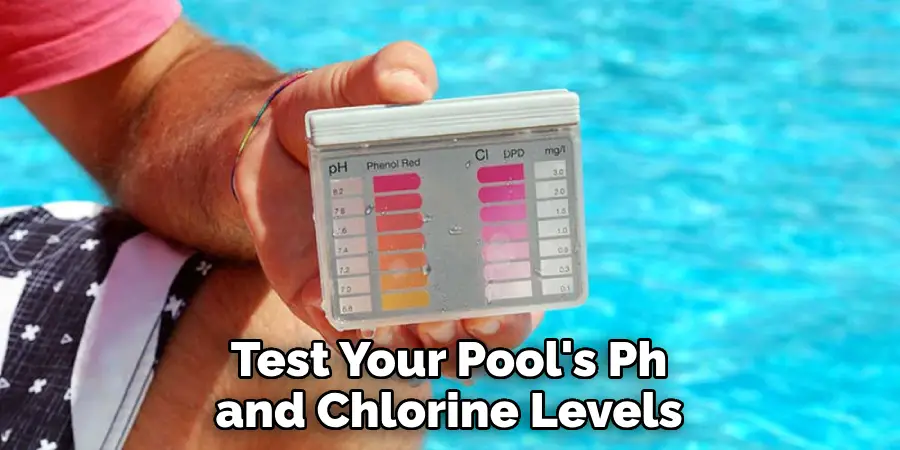
The ideal pH level for your pool should be between 7.2 and 7.8. It’s best to shock the pool with chlorine a day before using the flocculant for better results. But if you don’t have shock treatment chemicals, you can proceed with the flocculant but test again after 12 hours to ensure proper balance.
Step 2: Clean and Brush Your Pool
Remove any visible debris, leaves or dirt from the pool surface with a skimmer net. Then brush your pool walls and floor to loosen any algae, bacteria or other organic matter that may be attached. This will help the flocculant to work more efficiently.
But be careful not to stir up too much dirt and debris while brushing. It’s best to brush the pool for at least 8 hours before adding the flocculant so that debris has time to settle. You can also use a pool vacuum to suck up any remaining debris on the bottom of the pool.
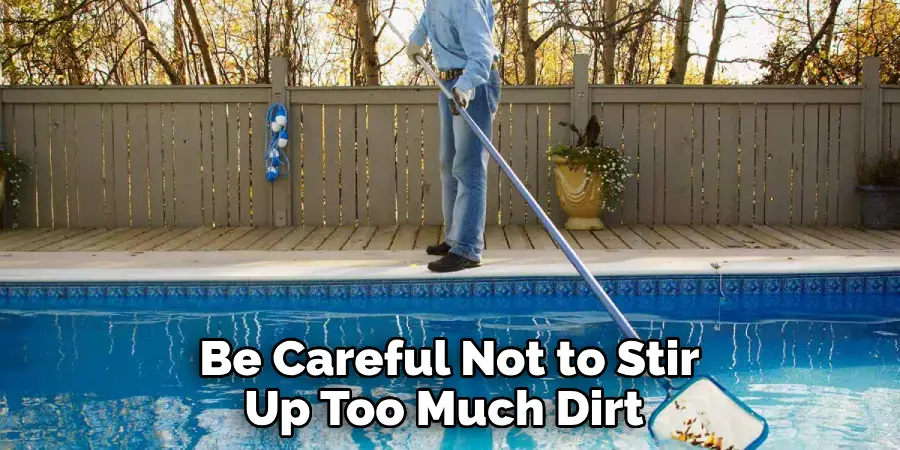
Step 3: Follow the Instructions on the Flocculant Package
Read and follow the instructions on your specific flocculant package. The quantity of flocculant needed depends on the size of your pool, so make sure you have enough to treat your entire swimming pool. You can use either a powder or liquid flocculant, depending on your preference.
Liquid flocculants are easier to use and dissolve quickly, while powder flocculants take a little longer to dissolve. It’s also essential to wear protective gloves and goggles while handling flocculants.
Step 4: Dilute the Flocculant
Dissolve the recommended amount of flocculant in a bucket of water. Make sure to mix it thoroughly to create a uniform solution. You can use a wooden stick or plastic spoon to stir the mixture. It’s best to add the flocculant after sunset so that it can work overnight. But if you decide to add it during the day, make sure your pool pump is turned off. It’s crucial to keep the pool water still for the flocculant to work.
Step 5: Add the Flocculant to the Pool
Slowly pour the flocculant solution around the edges of your pool while walking around. This will help distribute it more evenly. Make sure you pour the solution as close to the water surface without splashing or disturbing the pool bottom.
Otherwise, it can interfere with the sedimentation process. It’s best to add the flocculant solution in one dose to avoid any discrepancies. You can run the pool pump for about an hour to help distribute the flocculant evenly.
Step 6: Keep Your Pool Pump Off
It’s essential to keep the pool pump off for at least six hours after adding the flocculant. This will give enough time for the flocs to form and settle at the bottom of your pool. But if you decide to add the flocculant during the day, switch your pool pump off for at least eight hours before turning it back on. It’s best to leave the pump off overnight for better results. It’s also recommended to add the flocculant when you won’t be using your pool for a day or two.
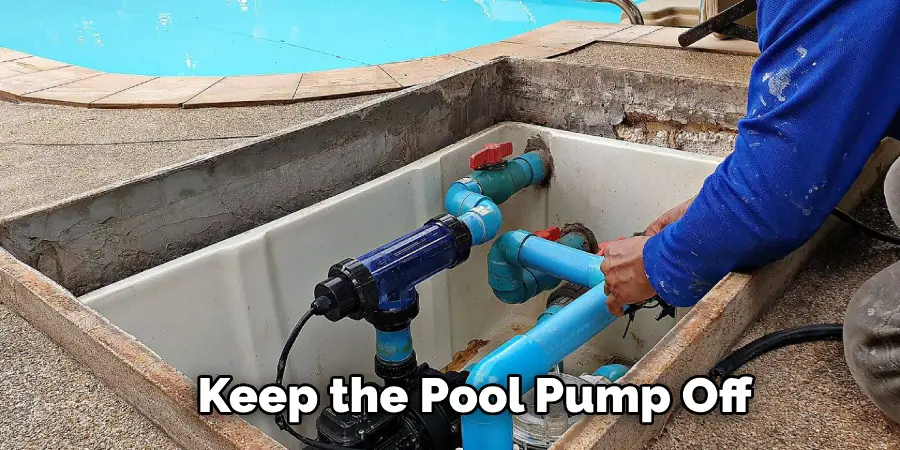
Step 7: Wait and Let the Flocculant Work
It’s now time to be patient and let the flocculant do its magic. The flocs will start forming within an hour or two, depending on how dirty your pool is. But it’s best to wait for at least 24 hours before moving on to the next step. During this time, do not touch, swim or disturb the pool. You can cover the pool with a tarp to prevent any debris or dirt from entering. But be careful not to let the tarp touch the pool water.
Step 8: Turn on Your Pool Pump
After at least 24 hours have passed, it’s time to turn your pool pump back on. This step will help circulate and filter out the settled flocs from your pool. But make sure you set your filter value into the “waste” or “backwash” mode to avoid clogging it.
If you don’t, the flocs can get trapped in your pool filter, reducing its efficiency. It’s also recommended to vacuum the pool while the pump is running for better results. But the vacuumed water should be drained to waste, not back into your pool.
Step 9: Vacuum Your Pool
Attach your pool vacuum cleaner and start cleaning the pool floor and walls. Make sure you vacuum slowly to avoid disturbing the settled flocs at the bottom. Continue vacuuming until your pool is entirely clean, and there are no visible flocs left in it.
It’s best to rinse off the collected debris from time to time during this process. But if your pool is still cloudy, you may need to repeat the flocculation process. It’s also recommended to backwash your pool filter after vacuuming.
Step 10: Balance Your Pool’s Chemistry
After vacuuming, test your pool water chemistry again. If needed, balance its pH and chlorine levels by following the appropriate instructions for your specific chemicals. It’s recommended to shock your pool with chlorine once again after using flocculant to prevent any bacteria or algae from growing back. Wait at least 24 hours before using your pool again. Though, it’s best to wait for 48 hours if you have a lot of flocs in your pool.

Step 11: Clean Your Pool Filter
After the flocs have been removed, it’s crucial to clean and backwash your pool filter. This will help remove any trapped particles or debris that may affect the filter’s efficiency. You can also replace your pool filter cartridge or sand if needed. This step is essential to ensure that your pool stays clean and clear for a more extended period. You can also schedule regular filter cleaning and maintenance to keep your pool in top condition.
Following these steps on how to use flocculant in pool will help you use flocculant effectively and maintain a clean and clear pool. Remember to always read and follow the instructions on your specific flocculant package for the best results. Regularly testing and balancing your pool’s chemistry is also vital for its overall health. With proper care, your pool will remain a safe and enjoyable place to swim all summer long.
How Much Will It Cost?
The cost of using flocculant in your pool will depend on the type and brand of flocculant you choose, as well as the size of your pool. Generally, liquid flocculants are more expensive than powder options, but they may be easier to use. On average, you can expect to spend anywhere between $20-$50 for a single treatment with flocculant.
However, the cost may vary depending on your location and pool size. It’s best to do some research and compare prices before purchasing a specific flocculant for your pool. Additionally, remember to factor in the cost of any additional chemicals or maintenance required after using flocculant.
So, make sure you budget accordingly and follow the recommended dosage for your specific pool size to avoid overspending on flocculant treatments.
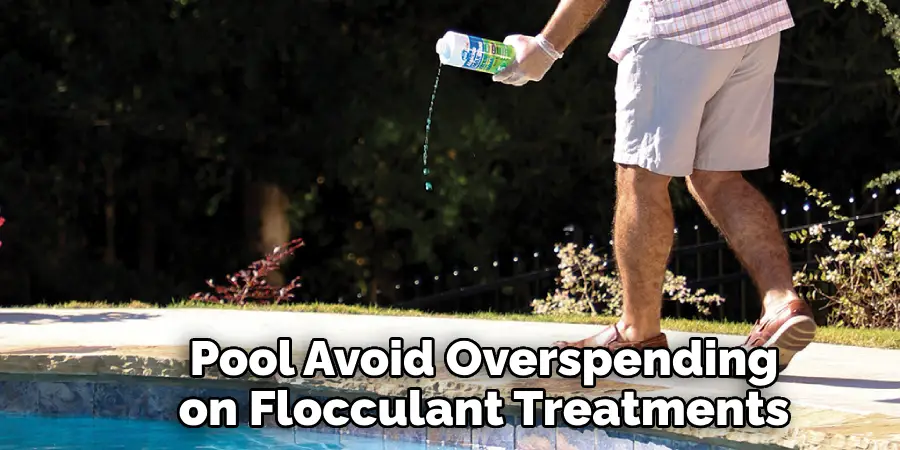
While it may seem like an added expense, using a flocculant can save you money in the long run by preventing algae growth and reducing the need for frequent pool cleaning. Plus, the results of a clear and clean pool are well worth the cost. So don’t let the initial cost deter you from using flocculant in your pool maintenance routine – it’s a small price to pay for a sparkling swimming pool.
Frequently Asked Questions
Q: How Long Does It Take for a Flocculant to Work in a Pool?
A: The time it takes for flocculant to work in a pool can vary depending on the amount of debris and particles present. It can take anywhere from 24-48 hours for the flocs to form and settle at the bottom of the pool, but it’s best to wait at least 24 hours before turning the pool pump back on.
Q: Can I Use Flocculant in a Saltwater Pool?
A: Yes, you can use flocculant in a saltwater pool. However, make sure to follow the instructions on your specific flocculant package, as some may not be suitable for saltwater pools. It’s also essential to test and balance your pool’s chemistry after using flocculant in a saltwater pool.
Q: Can I Swim in My Pool After Using Flocculant?
A: It’s best to wait at least 24 hours before swimming in your pool after using flocculant. However, if you have used a large amount of flocculant or your pool is still cloudy, it’s recommended to wait for 48 hours before using the pool. Always follow the instructions on your specific flocculant package and test your pool water chemistry before swimming. So, you may use Flocculant in the Pool for a clean and safe swim.
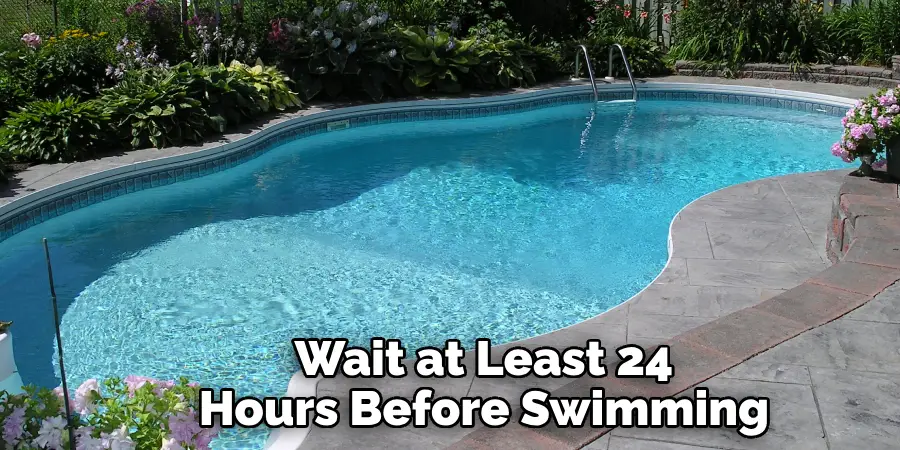
Q: How Often Should I Use Flocculant in My Pool?
A: It’s best to use flocculant in your pool only when needed. If you regularly maintain and clean your pool, you may not need to use flocculant often. However, if you notice persistent cloudiness or have a high number of swimmers, it may be necessary to use flocculant more frequently. Always follow the instructions on your specific flocculant package and test your pool water chemistry before use. So, you may use Flocculant in the Pool for a clean and safe swim.
Conclusion
In conclusion, by keeping on top of your pool maintenance and learning how to use flocculants correctly, you can ensure that your pool will stay crystal clear all summer long.
So don’t be discouraged if you encounter issues with cloudy water or other signs of a dirty pool; properly apply the right dose of flocculant for your pool size and watch it become clean again in no time! Flocculant is an oft-overlooked but invaluable tool that will keep your pool looking sparkling and feeling refreshing. Now go out there and enjoy your perfectly purified swimming oasis! Thanks for reading this article on how to use flocculant in pool.

